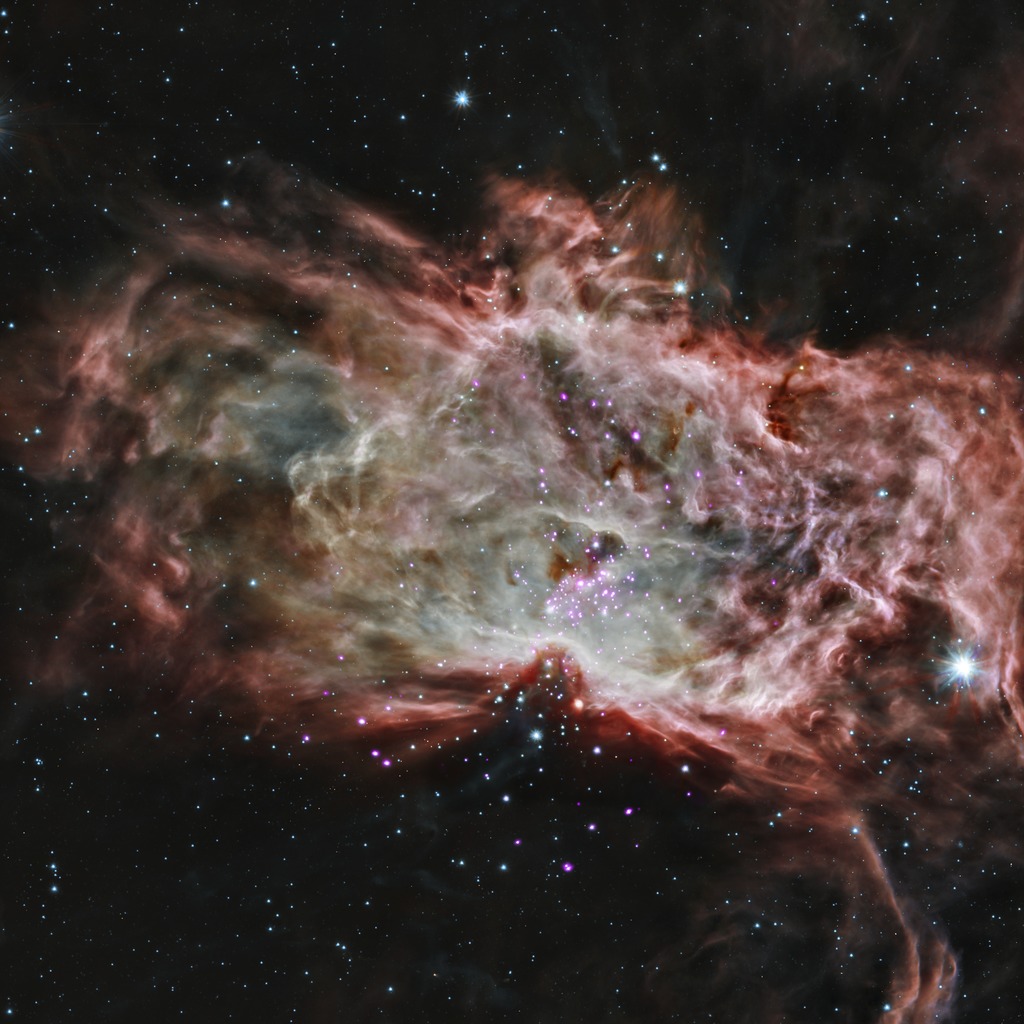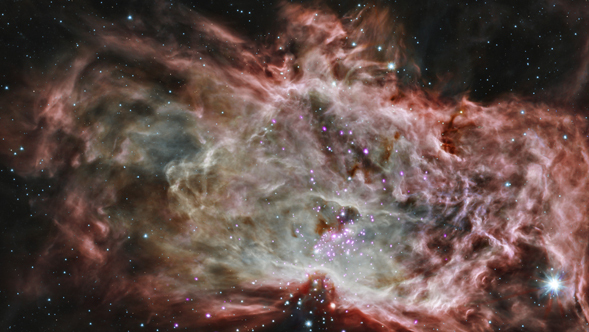
Credit: X-ray: NASA/CXC/PSU/K.Getman, E.Feigelson, M.Kuhn & the MYStIX team; Infrared:NASA/JPL-Caltech
Observation • May 7th, 2014 • ssc2014-04a
ssc2014-04a
Stars are often born in clusters or groups, in giant clouds of gas and dust. Astronomers have studied two star clusters using NASAs Chandra X-ray Observatory and infrared telescopes and the results show that the simplest ideas for the birth of these clusters cannot work.
This composite image shows one of the clusters, NGC 2024, which is found in the center of the so-called Flame Nebula about 1,4000 light years from Earth. In this image, X-rays from Chandra are seen as purple, while infrared data from NASAs Spitzer Space Telescope are colored red, green, and blue.
A study of NGC 2024 and the Orion Nebula Cluster, another region where many stars are forming, suggest that the stars on the outskirts of these clusters are older than those in the central regions. This is different from what the simplest idea of star formation predicts, where stars are born first in the center of a collapsing cloud of gas and dust when the density is large enough.
The research team developed a two-step process to make this discovery. First, they used Chandra data on the brightness of the stars in X-rays to determine their masses. Next, they found out how bright these stars were in infrared light using data from Spitzer, the 2MASS telescope, and the United Kingdom Infrared Telescope. By combining this information with theoretical models, the ages of the stars throughout the two clusters could be estimated.
According to the new results, the stars at the center of NGC 2024 were about 200,000 years old while those on the outskirts were about 1.5 million years in age. In Orion, the age spread went from 1.2 million years in the middle of the cluster to nearly 2 million years for the stars toward the edges.
Explanations for the new findings can be grouped into three broad categories. The first is that star formation is continuing to occur in the inner regions. This could have happened because the gas in the outer regions of a star-forming cloud is thinner and more diffuse than in the inner regions. Over time, if the density falls below a threshold value where it can no longer collapse to form stars, star formation will cease in the outer regions, whereas stars will continue to form in the inner regions, leading to a concentration of younger stars there.
Another suggestion is that old stars have had more time to drift away from the center of the cluster, or be kicked outward by interactions with other stars. Finally, the observations could be explained if young stars are formed in massive filaments of gas that fall toward the center of the cluster.
These results will be published in two separate papers in The Astrophysical Journal and are available online (papers 1 and 2). They are part of the MYStIX (Massive Young Star-Forming Complex Study in Infrared and X-ray) project led by Penn State astronomers.
About the Object
- Name
- Flame Nebula
- Type
- Nebula > Type > Star Formation
- Distance
- 1,400 Light Years
Color Mapping
| Band | Wavelength | Telescope |
| X-ray | 1.5 keV | Chandra ACIS |
| Infrared | 3.6 µm | Spitzer IRAC |
| Infrared | 4.5 µm | Spitzer IRAC |
| Infrared | 5.8 µm | Spitzer IRAC |
Astrometrics
- Position (J2000)
- RA =5h 41m 51.3s
- Dec = -1° 50' 56.2"
- Field of View
- 37.3 x 37.3 arcminutes
- Orientation
- North is up





